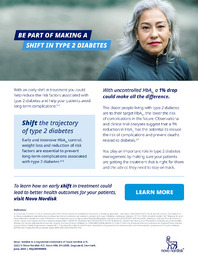Por favor, use este identificador para citar o enlazar este ítem:
https://hdl.handle.net/11000/30768Registro completo de metadatos
| Campo DC | Valor | Lengua/Idioma |
|---|---|---|
| dc.contributor.author | Blasco Peris, Carles Andreu | - |
| dc.contributor.author | Climent, Vicente | - |
| dc.contributor.author | Vetrovsky, Tomas | - |
| dc.contributor.author | Garcia Alvarez, Maria Isabel | - |
| dc.contributor.author | Manresa Rocamora, Agustin | - |
| dc.contributor.author | Beltrán-Carrillo, Vicente J. | - |
| dc.contributor.author | Sarabia, José M. | - |
| dc.contributor.other | Departamentos de la UMH::Ciencias del Deporte | es_ES |
| dc.date.accessioned | 2024-01-26T11:35:07Z | - |
| dc.date.available | 2024-01-26T11:35:07Z | - |
| dc.date.created | 2023-08-21 | - |
| dc.identifier.citation | ESC Heart Failure (2023) | es_ES |
| dc.identifier.issn | 2055-5822 | - |
| dc.identifier.uri | https://hdl.handle.net/11000/30768 | - |
| dc.description.abstract | Aims Physical activity (PA) is an important target for improving clinical outcomes in heart failure (HF) patients. Nonetheless, assessing the daily PA profile in this population is a challenging task, traditionally performed using self-report questionnaires such as the International PA Questionnaire Short Form (IPAQ-SF). This study aimed to evaluate the concurrent validity of the IPAQ-SF and accelerometer-assessed PA using six published cut-points in patients with HF and reduced or mildly reduced ejection fraction. Methods and results The concordance between the IPAQ-SF and a hip-worn accelerometer regarding daily time spent performing moderate to vigorous PA in bouts of at least 10 min was assessed in 53 participants for seven consecutive days using six different cut-points (Barnett, Dibben, Mark, Sanders, Troiano, and Vaha-Ypya). Spearman’s correlation and Bland–Altman plots were used to evaluate concurrent validity between methods. Regressions were used to study the association between patient variables, wear protocol (waking hour or 24 h), and absolute bias. The kappa index was used to evaluate the concordance between IPAQ-SF and accelerometry for classifying patients as active or non-active. All analyses were re-run using non-bouted metrics to investigate the effect of bouted versus non-bouted analysis. The IPAQ-SF and accelerometry showed low to negligible correlation (ρ = 0.12 to 0.37), depending on the cut-point used. The regression analysis showed that the absolute bias was higher in participants following the waking-hour protocol at all cut-points except Dibben’s (P ≤ 0.007). The concordance between the two methods to classify patients as active and non-active was low when using Mark (κ = 0.23) and Barnett (κ = 0.34) cut-points and poor for the remaining cut-points (κ = 0.03 to 0.18). The results of the sensitivity analysis showed negligible to low correlation using non-bouted metrics (ρ = 0.27 to 0.33). Conclusions Moderate to vigorous PA measures using IPAQ-SF and accelerometers are not equivalent, and we do not encourage researchers to use IPAQ-SF alone when assessing PA in HF patients. Moreover, applying personalized collection and processing criteria is important when assessing PA in HF patients. We recommend following the 24 h protocol and selecting cut-points calibrated in patients with cardiovascular diseases. Finally, it is necessary to develop a new tailored questionnaire that considers walking intensity and is adjusted to the current World Health Organisation recommendations, which use non-bouted metrics. | es_ES |
| dc.format | application/pdf | es_ES |
| dc.format.extent | 11 | es_ES |
| dc.language.iso | eng | es_ES |
| dc.publisher | Wiley Open Access | es_ES |
| dc.rights | info:eu-repo/semantics/openAccess | es_ES |
| dc.rights | Attribution-NonCommercial-NoDerivatives 4.0 Internacional | * |
| dc.rights.uri | http://creativecommons.org/licenses/by-nc-nd/4.0/ | * |
| dc.subject | activity monitor | es_ES |
| dc.subject | agreemen | es_ES |
| dc.subject | device-based measures | es_ES |
| dc.subject | HF | es_ES |
| dc.subject | MVPA | es_ES |
| dc.subject | self-reported measures | es_ES |
| dc.subject.classification | Educación Física y Deportiva | es_ES |
| dc.subject.other | CDU::796 - Juegos.Deportes | es_ES |
| dc.title | International Physical Activity Questionnaire Short Form and accelerometer-assessed physical activity: concurrent validity using six cut-points in HF patients | es_ES |
| dc.type | info:eu-repo/semantics/article | es_ES |
| dc.relation.publisherversion | https://doi.org/10.1002/ehf2.14514 | es_ES |

Ver/Abrir:
2023 Blasco‐Peris - IPAQ-SF vs accelerometry.pdf
1,22 MB
Adobe PDF
Compartir:
 La licencia se describe como: Atribución-NonComercial-NoDerivada 4.0 Internacional.
La licencia se describe como: Atribución-NonComercial-NoDerivada 4.0 Internacional.
.png)